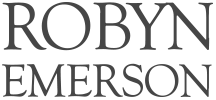Growing Market for New Enrolments Leads to Rises in Fees
Everybody knows that private school fees have risen considerably since the GFC. Normally, according to economic practice, price increases result in reduced demand – or in this case, fewer new enrolments – but many private schools are full and have long wait lists. So how has this come about?

The main reason is that the overall student “market” has grown significantly thanks to the large growth in Victoria’s population. The growth in student numbers has been marked over the past five years and particularly so over the past two years, in both the primary and secondary sectors. For example, in 2007 there was an increase of 3497 students in Victoria from the previous year, whereas in 2013 there was an increase of 14,388 students, according to the latest data from the Australian Bureau of Statistics.
The population growth has masked the resurgence of public sector enrolments compared to the enrolments of independent schools. In 2007, the last year before the effects of the GFC became apparent, independent schools had a 90.7 per cent share of new enrolment growth. The Catholic sector also had its share of new enrolments, but new enrolments at public sector schools went backwards.
By 2013 this trend had changed significantly. In that year independent schools gained only 13.5 per cent of the growth in new enrolments, which was below the share that the Catholic sector achieved (27.6 per cent) and well below the share the government sector achieved (58.9 per cent).
This change was most pronounced in the primary sector: government schools achieved a 70.2 per cent share of new enrolments in 2013, whereas the independent sector achieved just a 11 per cent share. In terms of students this means the government sector had 8486 more new enrolments at the primary level whereas the independent sector had just 1331 more new enrolments. By contrast, the government sector actually lost 1355 students in 2007.
In the secondary sector the trends are slightly different. Here, Catholic schools now garner the greater share of new enrolments. In 2007 the Catholic schools won 31.6 per cent of new enrolments in secondary schools, but in 2013 they garnered a whopping 73.8 per cent. Independent schools garnered 54.7 per cent of new enrolments in 2007 but by 2013 this figure had dropped to 26.7 per cent.
Clearly, the rising costs of school fees and extras is having an impact on the enrolment market for schools. Parents are especially weighing up whether to enrol a child at an independent school at the primary school level where the perceived benefit of a private education is less pronounced.
Typically, once a child is in the independent schools system it is rare for him or her to be moved to the public system (although movement between Independent schools is much more common than it has been in the past). So it is the new enrolment market that is most sensitive to rising school fees.
So what does this mean for schools?
Clearly, the government sector is under pressure to fund more places and the independent schools will have to compete harder for new enrolments. The Catholic sector has been a beneficiary; it typically offers lower fees but more of the trappings of independent private schools, such as improved buildings and grounds and a clearly enunciated values system.
These figures also suggest that if there is an economic downturn, independent schools will face a very difficult environment. They could be stuck with high fees (ever heard of fees falling?) and a much weaker new enrolment market as population growth dries up.
Robyn Emerson is a director with EMDA (Economic and Market Development Advisors). emda.com.au
First published in The Age – click here to view

